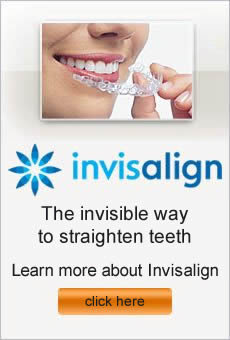One thing that can make you a pretty unpopular person is bad breath. People will avoid being around you if you emit a stinky odor every time you open your mouth. If you don’t want to fall victim to this embarrassing problem, try the following tactics.
Brush and floss
For many reasons, you should carefully brush your teeth at least twice a day. This includes brushing your tongue and gums, where bacteria tend to build up and lead to mouth odor. Flossing should be performed daily to help get rid of food debris and plaque.
Drink water
Having a dry mouth increases bad breath, so staying hydrated is an important way to avoid odor. It is recommended to drink thirteen cups of water each day, which may be difficult to accomplish but it is a good goal to keep in mind. You can also prevent dry mouth by limiting foods and drinks known to cause dehydration, like coffee, energy drinks, and anything high in sugar or caffeine.
Chew parsley
A natural remedy for decreasing odor, chewing parsley can be helpful for stinky breath. It contains chlorophyll, which is known to fight smells and freshen breath.
Brush with oils
Peppermint oil and tea tree oil are both known to decrease halitosis, or bad breath. Placing just a couple of drops of these oils on your toothbrush can help attack the bacteria in your mouth and therefore fight mouth odor.
Valley Village Orthodontist
As a parent, you want your child to have the healthiest teeth possible. Here are some tips for you to consider as you strive to help your child achieve this oral health goal.
Teach oral hygiene
Helping your children take care of their teeth should start at a very early age, so that proper hygiene habits are learned and practiced throughout life. Begin brushing their gums with a soft toothbrush even before the first tooth erupts to prevent bacteria from building up. Once your child is old enough to brush, allow them to do it with supervision until about age eight. Also teach your child to floss properly as part of a daily dental care routine.
Choose the right toothpaste
Look for the key ingredient of fluoride in toothpaste, which helps fight bacteria and plaque. When your child is young, supervise the use of fluoride toothpaste so that none is swallowed.
Visit the dentist
Begin taking your child for dental visits around their first birthday, and continue with regular checkups twice a year. Early dental visits help your child become comfortable with the process, and allow the dentist to watch for oral health problems so that they can be treated as soon as possible.
Avoid bedtime bottles
Do not give your child bottles filled with milk, fruit juice, or soda at bedtime. The sugars in these drinks can harm teeth and cause decay, and prolonged exposure to them such as overnight makes it even more hazardous.
Consider sealants
Ask your dentist about applying sealants to your child’s teeth in order to help prevent decay and cavities. Usually applied by your dentist to the chewing surfaces of back teeth, sealants help keep food and bacteria out of areas where decay most often occurs. Sealants are a painless way to help protect your child’s teeth.
In recent years, more kids and adults are wearing braces. Research indicates that 70 percent of the population could benefit from orthodontic treatment. Based on fossil findings, our ancestors had little trouble with alignment of their teeth, so what happened to us? As different ethnic and genetic populations began to merge, human growth pattern in the mouth didn’t accommodate teeth and jaw development.
Often, children inherit the need for orthodontic from one or both parents whose teeth didn’t align correctly, just as you inherit eye color or seasonal allergies. These tendencies can be passed down from generation to generation. Consequently, your child’s teeth may be too large or too small for the jaw area, resulting in crowding or extra spaces.
With modern orthodontic treatment, your orthodontist can correct alignment and spacing problems. Generally, it’s a good idea to bring your child in for an orthodontic evaluation around age seven. At this time, the orthodontist can assess your child’s current and future development to determine if any intervention is necessary. Some children require Phase I, or early orthodontic treatment, to prepare their mouths for Phase 2, the straight-forward phase of treatment that usually involves traditional braces.
If you would like a straighter smile, but never made steps to change it, there’s still time. Even adults can benefit from orthodontic treatment. With modern alternatives like Invisalign clear aligners or ceramic braces, you can achieve a picture-perfect smile without the hassle and embarrassment of metal braces.
We’ll give you something to smile about at our Sherman Oaks, CA orthodontic practice – Mehdi Fotovat, DDS.
Most people aren’t born with the perfect smile. It often takes help from your dentist and orthodontist. For straighter teeth, your orthodontist will evaluate your mouth and make recommendations to correct problem areas, producing the desired results. Often, individuals seeking orthodontic treatment have gathered information from well-meaning friends and family, or a Google search on the Internet.
Here are some common misperceptions about orthodontics:
• Treatment time is set in stone.
When you get braces, your orthodontist will give you an approximate date for the end of treatment. Several factors, however, can influence that time frame, including how quickly your teeth move and whether you follow instructions properly. Usually, this date is a rough estimate, not a guarantee.
• Orthodontic treatment is painful.
Though you may experience some pressure and slight discomfort when you initially receive your braces, and after an adjustment, most people have few issues with pain during treatment.
• I can easily switch orthodontists .
Just like you wouldn’t change heart doctors in the middle of treatment, it’s best to stick with the same orthodontist. Each practitioner may have specific ways of doing things or certain types of wires they prefer, which makes changing practices difficult. As well, sorting out costs and payment can be tricky.
• After treatment, my teeth will stay perfectly straight.
While braces or other therapies will move your teeth into the right position, they have a natural tendency to shift back after treatment. Wearing a retainer as directed by your orthodontist will ensure that you keep your smile looking sensational.
• All overbites need correction.
Actually, many individuals have some degree of overbite. A small overbite actually stops you from wearing down the front teeth and doesn’t warrant treatment.
Consider our Orthodontic team in Sherman Oaks California – Dr. Fotovat – Burbank Orthodontist – WebBraces.com
Modern orthodontic treatment can address a variety of issues, including overbites and underbites. When the front teeth cover the lower teeth in a distinct manner, it is called an overbite. Many people have some degree of overbite, but in lots of cases, no treatment is required.
With an underbite, the lower front teeth protrude out in front of the top teeth, and the lower jaw may be much more prominent. In some cases, an underbite will resolve itself. If the underbite is severe and it is not treated, temperomandibular joint (TMJ) disorder, poor bite, an uneven tooth wear can occur.
Usually, you inherit the tendency toward an overbite or underbite, just like eye color or height. Sometimes, a bite becomes misaligned because of other factors such as early tooth loss, improper restorations, habits such as thumb sucking, or facial trauma. Misalignments can create additional oral health problems such as pain, increased risk of cavities, and strain on the whole chewing system.
To determine the best treatment, your orthodontist will first take X-rays and perform a complete examination. Then, the doctor will make recommendations to correct the overbite or underbite. Depending on the situation, a removable retainer may address the problem. Most of the time, braces will be needed to move the teeth into the proper position. Rarely, with an extreme overbite or underbites, surgery may be the suggested treatment course.
Our patients are number one at our Sherman Oaks, CA orthodontic office – Mehdi Fotovat, DDS.



